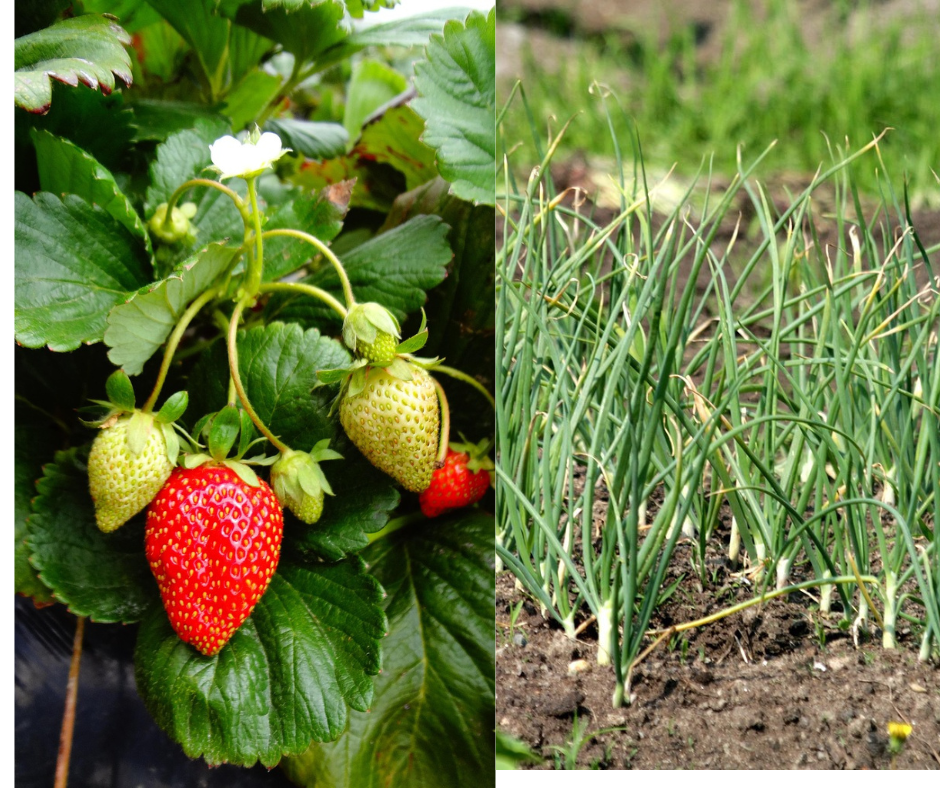
Companion planting is a gardening technique that involves planting different crops together to enhance their growth and productivity. When it comes to strawberries and garlic, companion planting can be particularly beneficial. Strawberries are susceptible to pests and diseases, while garlic has natural pest-repelling properties. By planting these two crops together, you can create a mutually beneficial environment that promotes healthy growth and yields. In this article, we’ll explore five key tips for successful companion planting strawberries and garlic.
This post may have affiliate links. This means that sometimes when you click a link on our site and make a purchase on Amazon, we may earn a small commission at no additional cost to you. We only recommend products we truly believe in, and your support helps keep us running!
Tip 1: Choose the Right Varieties
When selecting strawberry and garlic varieties for companion planting, it’s important to choose ones that are compatible with each other. For strawberries, choose varieties that are disease-resistant and thrive in your climate. For garlic, choose varieties that are known for their pest-repelling properties, such as hardneck garlic. By choosing the right varieties, you’ll set yourself up for success from the start.
Tip 2: Plant at the Right Time
Timing is everything when it comes to companion planting strawberries and garlic. Plant your garlic in the fall, about four to six weeks before the first frost. This will give the garlic enough time to establish roots before winter sets in. In the spring, plant your strawberries in a separate raised bed or container. Once the strawberries are established, transplant them to the bed with the garlic. This will ensure that both crops have the space and nutrients they need to thrive.
Tip 3: Provide the Right Soil Conditions
Both strawberries and garlic require well-draining soil that is rich in organic matter. Before planting, amend your soil with compost or aged manure to improve its fertility. Additionally, garlic prefers a slightly acidic soil pH of 6.0 to 7.0, while strawberries prefer a slightly more alkaline pH of 6.5 to 7.5. Test your soil pH and adjust it as needed to provide the optimal growing conditions for both crops.
Tip 4: Practice Good Companion Planting Techniques
Companion planting is all about creating a harmonious environment for your crops. To achieve this, practice good companion planting techniques such as intercropping, where you plant different crops together in the same bed, and crop rotation, where you rotate your crops to prevent soil-borne diseases. Additionally, consider planting other companion plants such as marigolds, which are known to repel pests and attract beneficial insects.
Tip 5: Mulch Mania: A Shield from Foes and a Boost for Growth
Mulch is your garden’s superhero, offering protection and nourishment. Spread a 2-3 inch layer of organic mulch like straw or shredded leaves around your plants. This retains moisture, suppresses weeds, and regulates soil temperature. Remember, however, to keep mulch away from the crowns of your strawberries to prevent rot. Bonus points: Consider using chopped garlic scapes (the flowering stem) as mulch – it adds a touch of pest-repelling magic!
Tip 6: Spatial Harmony: Striking the Right Balance
Imagine your garden as a bustling dance floor. You wouldn’t cram everyone together, right? The same applies to your strawberry-garlic partnership. Plant your strawberries in raised beds or rows, leaving ample space (12-18 inches) between each plant. Interplant your garlic strategically. Some gardeners favor alternating rows, while others prefer placing garlic cloves around individual strawberry plants. Experiment and observe to find what works best in your space.
Tip 7: Monitor and Maintain Your Plants
Companion planting requires ongoing monitoring and maintenance to ensure that your crops are healthy and productive. Keep an eye out for pests and diseases, and take action immediately if you notice any issues. Additionally, water your plants regularly and fertilize them as needed to provide the nutrients they need to thrive.
Experiment, observe, and adapt your approach based on your unique garden conditions and the whispers of your plants. With these tips as your guide, you can cultivate a thriving strawberry-garlic partnership, enriching your garden with flavor, beauty, and the satisfaction of a harmonious growing experience.
